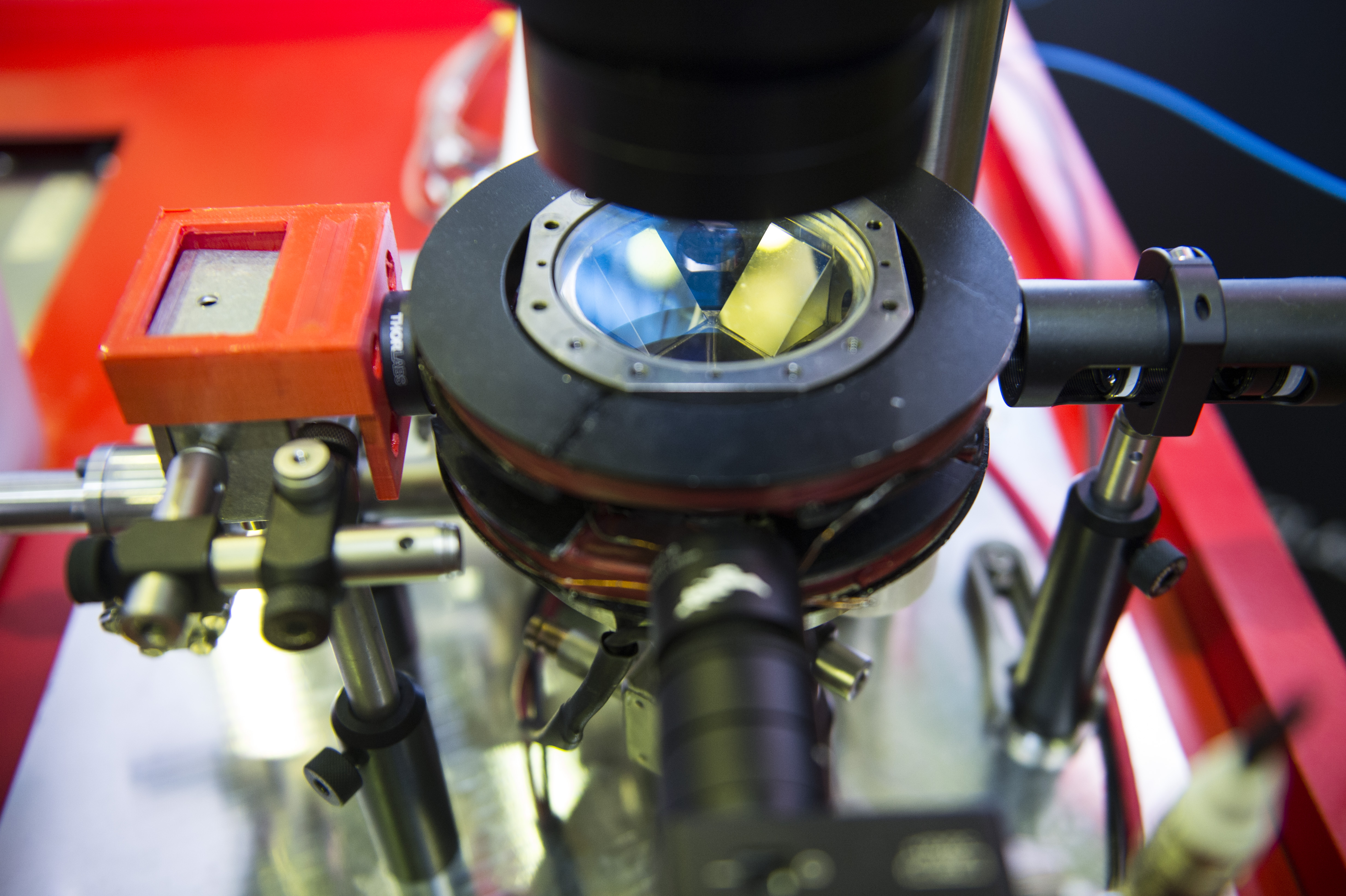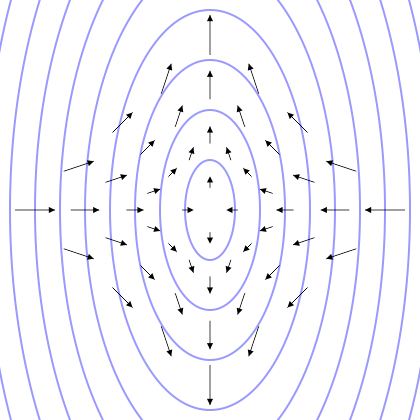|
Peter W. Graham
Peter W. Graham is a professor of physics at Stanford University. Early life Graham was born to Wayne Wickelgren and Norma Graham. He has 4 siblings including mathematician Kirsten Wickelgren and American lawyer Abraham Wickelgren. He graduated from Stuyvesant High School. He is grandson of psychologist Frances K. Graham and great-grandson of surgeon Evarts Ambrose Graham. Education Graham attended Harvard University, graduating with an AB and AM in 2002. He studied physics. He received a Ph.D. in physics from Stanford University in 2007. He was advised by Savas Dimopoulos. Career Graham became an assistant professor at Stanford in 2010. He is interested in physics beyond the Standard Model, both theoretically and through proposals for novel experiments using techniques from astrophysics, atomic physics, and solid-state physics. He proposed, with Surjeet Rajendran and others, the Cosmic Axion Spin Precession Experiment (CASPEr), which aims to detect axions as candidate ... [...More Info...] [...Related Items...] OR: [Wikipedia] [Google] [Baidu] |
Eugene, Oregon
Eugene ( ) is a city in and the county seat of Lane County, Oregon, United States. It is located at the southern end of the Willamette Valley, near the confluence of the McKenzie River (Oregon), McKenzie and Willamette River, Willamette rivers, about east of the Oregon Coast. The List of cities in Oregon, second-most populous city in Oregon, Eugene had a population of 176,654 as of the 2020 United States census and it covers city area of . The Eugene-Springfield, OR MSA, Eugene-Springfield metropolitan statistical area is the second largest in Oregon after Portland, Oregon, Portland. In 2022, Eugene's population was estimated to have reached 179,887. Eugene is home to the University of Oregon, Bushnell University, and Lane Community College. The city is noted for its natural environment, recreational opportunities (especially Cycling, bicycling, running/jogging, rafting, and kayaking), and focus on the arts, along with its history of civil unrest, riots, and green activism. Eug ... [...More Info...] [...Related Items...] OR: [Wikipedia] [Google] [Baidu] |
Solid-state Physics
Solid-state physics is the study of rigid matter, or solids, through methods such as solid-state chemistry, quantum mechanics, crystallography, electromagnetism, and metallurgy. It is the largest branch of condensed matter physics. Solid-state physics studies how the large-scale properties of solid materials result from their atomic-scale properties. Thus, solid-state physics forms a theoretical basis of materials science. Along with solid-state chemistry, it also has direct applications in the technology of transistors and semiconductors. Background Solid materials are formed from densely packed atoms, which interact intensely. These interactions produce the mechanical (e.g. hardness and Elasticity (physics), elasticity), Heat conduction, thermal, Electrical conduction, electrical, Magnetism, magnetic and Crystal optics, optical properties of solids. Depending on the material involved and the conditions in which it was formed, the atoms may be arranged in a regular, geometric patt ... [...More Info...] [...Related Items...] OR: [Wikipedia] [Google] [Baidu] |
Larry Abbott
Laurence Frederick Abbott"LAURENCE F. ABBOTT CV" Retrieved on 31 March 2020. (born 1950) is an American theoretical neuroscientist, who is currently the William Bloor Professor of Theoretical Neuroscience at , where he helped create the Center for Theoretical Neuroscience. He is widely regarded as one of the leaders of theoretical neuroscience, and is coauthor, along with , on the first comprehensive textbook on theoretical neuroscience, whi ... [...More Info...] [...Related Items...] OR: [Wikipedia] [Google] [Baidu] |
Higgs Field
The Higgs boson, sometimes called the Higgs particle, is an elementary particle in the Standard Model of particle physics produced by the excited state, quantum excitation of the Higgs field, one of the field (physics), fields in particle physics theory. In the Standard Model, the Higgs particle is a massive scalar boson that Coupling (physics), couples to (interacts with) particles whose mass arises from their interactions with the Higgs Field, has zero Spin (physics), spin, even (positive) Parity (physics), parity, no electric charge, and no color charge, colour charge. It is also very unstable, particle decay, decaying into other particles almost immediately upon generation. The Higgs field is a scalar field with two neutral and two electrically charged components that form a complex doublet (physics), doublet of the weak isospin SU(2) symmetry. Its "Spontaneous symmetry breaking#Sombrero potential, sombrero potential" leads it to take a nonzero value everywhere (inclu ... [...More Info...] [...Related Items...] OR: [Wikipedia] [Google] [Baidu] |
Inflation (cosmology)
In physical cosmology, cosmic inflation, cosmological inflation, or just inflation, is a theory of exponential expansion of space in the very early universe. Following the inflationary period, the universe continued to expand, but at a slower rate. The re-acceleration of this slowing expansion due to dark energy began after the universe was already over 7.7 billion years old (5.4 billion years ago). Inflation theory was developed in the late 1970s and early 1980s, with notable contributions by several theoretical physicists, including Alexei Starobinsky at Landau Institute for Theoretical Physics, Alan Guth at Cornell University, and Andrei Linde at Lebedev Physical Institute. Starobinsky, Guth, and Linde won the 2014 Kavli Prize "for pioneering the theory of cosmic inflation". It was developed further in the early 1980s. It explains the origin of the large-scale structure of the cosmos. Quantum fluctuations in the microscopic inflationary region, magnified t ... [...More Info...] [...Related Items...] OR: [Wikipedia] [Google] [Baidu] |
Higgs Boson
The Higgs boson, sometimes called the Higgs particle, is an elementary particle in the Standard Model of particle physics produced by the excited state, quantum excitation of the Higgs field, one of the field (physics), fields in particle physics theory. In the Standard Model, the Higgs particle is a massive scalar boson that Coupling (physics), couples to (interacts with) particles whose mass arises from their interactions with the Higgs Field, has zero Spin (physics), spin, even (positive) Parity (physics), parity, no electric charge, and no color charge, colour charge. It is also very unstable, particle decay, decaying into other particles almost immediately upon generation. The Higgs field is a scalar field with two neutral and two electrically charged components that form a complex doublet (physics), doublet of the weak isospin SU(2) symmetry. Its "Spontaneous symmetry breaking#Sombrero potential, sombrero potential" leads it to take a nonzero value everywhere (inclu ... [...More Info...] [...Related Items...] OR: [Wikipedia] [Google] [Baidu] |
Hierarchy Problem
In theoretical physics, the hierarchy problem is the problem concerning the large discrepancy between aspects of the weak force and gravity. There is no scientific consensus on why, for example, the weak force is 1024 times stronger than gravity. Technical definition A hierarchy problem occurs when the fundamental value of some physical parameter, such as a coupling constant or a mass, in some Lagrangian is vastly different from its effective value, which is the value that gets measured in an experiment. This happens because the effective value is related to the fundamental value by a prescription known as renormalization, which applies corrections to it. Typically the renormalized value of parameters are close to their fundamental values, but in some cases, it appears that there has been a delicate cancellation between the fundamental quantity and the quantum corrections. Hierarchy problems are related to fine-tuning problems and problems of naturalness. Throughout the ... [...More Info...] [...Related Items...] OR: [Wikipedia] [Google] [Baidu] |
David E
David (; , "beloved one") was a king of ancient Israel and Judah and the third king of the United Monarchy, according to the Hebrew Bible and Old Testament. The Tel Dan stele, an Aramaic-inscribed stone erected by a king of Aram-Damascus in the late 9th/early 8th centuries BCE to commemorate a victory over two enemy kings, contains the phrase (), which is translated as " House of David" by most scholars. The Mesha Stele, erected by King Mesha of Moab in the 9th century BCE, may also refer to the "House of David", although this is disputed. According to Jewish works such as the '' Seder Olam Rabbah'', '' Seder Olam Zutta'', and '' Sefer ha-Qabbalah'' (all written over a thousand years later), David ascended the throne as the king of Judah in 885 BCE. Apart from this, all that is known of David comes from biblical literature, the historicity of which has been extensively challenged,Writing and Rewriting the Story of Solomon in Ancient Israel; by Isaac Kalimi; pa ... [...More Info...] [...Related Items...] OR: [Wikipedia] [Google] [Baidu] |
Atom Interferometry
An atom interferometer uses the wave-like nature of atoms in order to produce interference. In atom interferometers, the roles of matter and light are reversed compared to the laser based interferometers, i.e. the beam splitter and mirrors are lasers while the source emits matter waves (the atoms) rather than light. Atom interferometers measure the difference in phase between atomic matter waves along different paths. Matter waves are controlled and manipulated using systems of lasers. Atom interferometers have been used in tests of fundamental physics, including measurements of the gravitational constant, the fine-structure constant, and universality of free fall. Applied uses of atom interferometers include accelerometers, rotation sensors, and gravity gradiometers. Overview Interferometry splits a wave into a superposition along two different paths. A spatially dependent potential or a local interaction differentiates the paths, introducing a phase difference between waves. ... [...More Info...] [...Related Items...] OR: [Wikipedia] [Google] [Baidu] |
Gravitational Waves
Gravitational waves are oscillations of the gravitational field that travel through space at the speed of light; they are generated by the relative motion of gravitating masses. They were proposed by Oliver Heaviside in 1893 and then later by Henri Poincaré in 1905 as the gravitational equivalent of electromagnetic waves. In 1916, Albert Einstein demonstrated that gravitational waves result from his general theory of relativity as ripples in spacetime. Gravitational waves transport energy as gravitational radiation, a form of radiant energy similar to electromagnetic radiation. Newton's law of universal gravitation, part of classical mechanics, does not provide for their existence, instead asserting that gravity has instantaneous effect everywhere. Gravitational waves therefore stand as an important relativistic phenomenon that is absent from Newtonian physics. Gravitational-wave astronomy has the advantage that, unlike electromagnetic radiation, gravitational waves are not a ... [...More Info...] [...Related Items...] OR: [Wikipedia] [Google] [Baidu] |
Electromagnetic Resonance
In physics, electromagnetism is an interaction that occurs between particles with electric charge via electromagnetic fields. The electromagnetic force is one of the four fundamental forces of nature. It is the dominant force in the interactions of atoms and molecules. Electromagnetism can be thought of as a combination of electrostatics and magnetism, which are distinct but closely intertwined phenomena. Electromagnetic forces occur between any two charged particles. Electric forces cause an attraction between particles with opposite charges and repulsion between particles with the same charge, while magnetism is an interaction that occurs between charged particles in relative motion. These two forces are described in terms of electromagnetic fields. Macroscopic charged objects are described in terms of Coulomb's law for electricity and Ampère's force law for magnetism; the Lorentz force describes microscopic charged particles. The electromagnetic force is responsible ... [...More Info...] [...Related Items...] OR: [Wikipedia] [Google] [Baidu] |
Magnetometry
A magnetometer is a device that measures magnetic field or magnetic dipole moment. Different types of magnetometers measure the direction, strength, or relative change of a magnetic field at a particular location. A compass is one such device, one that measures the direction of an ambient magnetic field, in this case, the Earth's magnetic field. Other magnetometers measure the magnetic dipole moment of a magnetic material such as a ferromagnet, for example by recording the effect of this magnetic dipole on the induced current in a coil. The invention of the magnetometer is usually credited to Carl Friedrich Gauss in 1832. Earlier, more primitive instruments were developed by Christopher Hansteen in 1819, and by William Scoresby by 1823. Magnetometers are widely used for measuring the Earth's magnetic field, in geophysical surveys, to detect magnetic anomalies of various types, and to determine the dipole moment of magnetic materials. In an aircraft's attitude and heading re ... [...More Info...] [...Related Items...] OR: [Wikipedia] [Google] [Baidu] |







